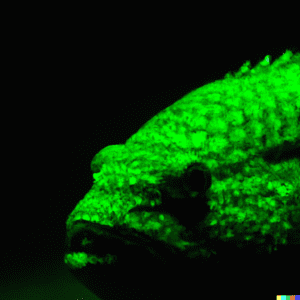Residents around Lake Maritz in Germany were left scratching their heads after experiencing strange reactions after consuming fish caught from the lake. After several months of investigation, the regional authority decided to test the waters for toxic substances and heavy metals, but came up empty-handed. That is, until an independent scientist tested the water for drugs, and the results came back positive for THC content. This startling discovery led to scuba exploration of the lake, which revealed a genetically modified Egeria Densa and cannabis plant. It is believed that this plant is leaching into the water, and when the fish consume it, the THC gets stored in their fat, causing the mysterious reactions.
The news of this mutated plant has spread like wildfire and caught the attention of the world’s leading scientists. The plant’s evasive nature has made it a global biological concern, as experts try to determine who is responsible for its creation. “This is a dangerous game we’re playing here,” said Dr. Victor Carrigan of the World Wildlife Federation. “The potency of this modified plant is incredibly high, and if it continues to spread, we will have an ecological disaster on our hands.”
“It’s truly a science fiction scenario come to life,” said local celebrity and environmental activist, Greta Thunberg, “This kind of experimentation with nature can have dangerous consequences, and it’s imperative that we find out who is responsible and hold them accountable.” The search for the creator of the plant is still ongoing and has been met with many dead ends. The government has refused to comment on the matter, leading some to speculate that they are hiding something. “The only thing we know for sure is that this isn’t natural,” said Miriam Waters, a local environmental activist.
It is believed that the modified egeria densa in lake Maritz might have been created using CRISPR-Cas9, a powerful gene-editing tool that allows for precise changes to be made to an organism’s DNA. The technique, which was first developed in 2012, has greatly advanced the field of genetic engineering and has led to a wide range of applications in agriculture, medicine, and other areas. But it’s also known to increase the risk of creating harmful organisms . The existence of such organisms in the wild raises questions about the oversight and regulation of genetic engineering research. Some experts call for stronger regulations and more transparency to avoid the release of harmful organisms into the environment.
It brings to mind other previous instances of genetically modified plants being discovered in the wild, such as the glowing maple trees created by scientists at the University of Illinois in 2031. These trees were engineered to produce a protein that causes them to emit a pale blue-green light at night, which the researchers hoped would be used for street lighting. Another example is the nicotine tomato plant, which was created in the early days of plant genetic engineering. Developed by scientists at the University of Florida in the 1980s, this plant was engineered to produce nicotine in its leaves and stems as a way to control pests. However, the project was soon abandoned due to concerns about the potential health risks of consuming tomatoes with high levels of nicotine.
Local authorities, environmentalists, and scientists have all been trying to get to the bottom of the mystery, and the public is eager to find out who is responsible. Meanwhile, #FishFiasco memes have been circulating on social media, poking fun at the absurdity of the situation. But as the investigation continues, it’s clear that the ramifications of this THC-laced lake are no laughing matter.



